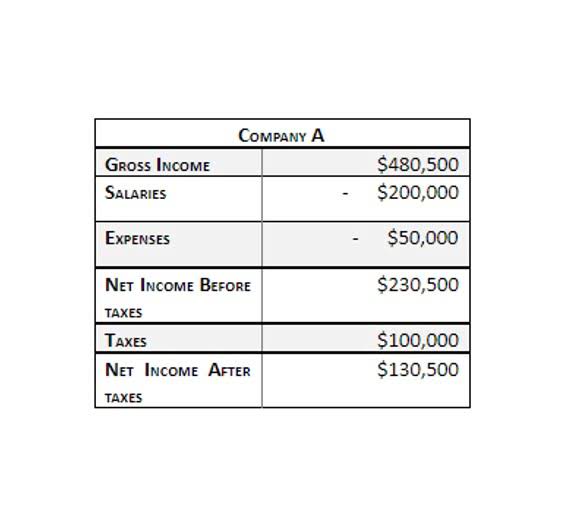Coastal is not responsible for and does not control, endorse or guarantee, any aspect of any linked third-party site. We encourage you to read and evaluate the privacy and security policies of the site you are entering, as such policies may be different from Coastal’s. For the past 52 years, Harold Averkamp (CPA, MBA) hasworked as an accounting supervisor, manager, consultant, university instructor, and innovator in teaching accounting online. For the past 52 years, Harold Averkamp (CPA, MBA) has worked as an accounting supervisor, manager, consultant, university instructor, and innovator in teaching accounting online. Since the information came from the general journal, GJ is written in the PR fields. GJ5 indicates that the entry can be found on page 5 of the general journal.
Posting Reference in the Journal
For savings accounts, interest calculations are typically based on posted balances, meaning delayed deposits could result in lost earnings. Conversely, delayed postings of loan payments may lead to higher interest costs. While revenue recognition under Generally Accepted Accounting Principles (GAAP) often ties to the transaction date, cash flow statements may reflect the posted date. Businesses must align their accounting practices with regulatory standards to avoid compliance issues and ensure accurate reporting. Some merchants batch process transactions at the end of the business day, delaying the posting date.
- Thus, every adjusting entry affects at least one income statement account and one balance sheet account.
- Recording transactions in the journal is a pivotal step in the posting process, involving the systematic entry of financial transactions to establish a chronological record of business activities.
- These costs include wages and benefits paid to workers who are directly involved in the production process.
- The posting reference (PR), sometimes folio (F), column in the journal usually comes after the particulars or description column.
- Traditionally, banks posted deposits and withdrawals from checking accounts in a ledger before summarizing these transactions on a monthly bank statement.
- This data is then multiplied by the hourly wage rate to determine the total labor cost attributable to WIP.
Why is my deposit posted but not available?
Allocating these costs to WIP can be more complex, as they must be distributed across all units of production. Companies typically use predetermined overhead rates, which are calculated based on historical data and applied to current production levels. This method helps to standardize overhead allocation and ensures consistency in WIP valuation. This content does not constitute legal, tax, accounting, financial, investment, or mental health advice. You are encouraged to consult with competent legal, tax, accounting, financial, investment, or mental health professionals based on your specific circumstances.
Tax Implications of Work in Process
Automated accounting systems, such as QuickBooks and Xero, streamline the transfer of journal entries to ledgers, reducing the likelihood of human error. These systems can automatically categorize transactions based on predefined rules, ensuring consistency and accuracy. For instance, recurring transactions like monthly rent or utility payments can be automatically posted to the appropriate accounts, saving time and effort for accountants. Even with meticulous attention to detail, posting errors can occur, potentially compromising the accuracy of financial records.
“Posting” is a crucial step that transforms raw transaction data into a structured format, enabling a clearer view of a company’s financial activities. This procedural action helps ensure financial records are accurate and coherent. Posting is the systematic transfer of financial data from chronological journal entries to their respective categorized accounts within the general ledger. For every debit and credit amount listed in a journal entry, an identical amount is entered into the corresponding general ledger account. Explore the vital accounting step of posting, which systematically organizes financial transactions from journals into ledger accounts for accurate reporting. A common misconception about memo debits is that they represent actual removal of funds from an account.
- Chances are, you may also see things like purchases and payments marked as “pending.” These are your pending transactions.
- Every financial event a business engages in first gets documented as a journal entry.
- The reconciled account balances from the general ledger, as confirmed by the trial balance, form the data for preparing a company’s financial statements.
- Retailers rely on memo-posted debits to confirm that funds will be available when the transaction is finalized, which is critical for managing inventory and supply chain logistics.
- A journal entry is the record of a financial transaction in the accounting journal, which includes the date, account names, debit and credit amounts, and a brief description of the transaction.
- While modern accounting software streamlines the process, the principles of double-entry bookkeeping remain essential.
Rules of Posting
The debit amount is placed on the debit side of the appropriate ledger account, and the credit amount is placed on the credit side of posted meaning in accounting its respective ledger account. This transfer process brings the detailed, chronological record into an organized, account-specific format. These statements, including the Balance Sheet, Income Statement, and Cash Flow Statement, rely entirely on the summarized data held within the general ledger. The availability of these summarized account balances provides valuable insights for internal management and external stakeholders. This information supports informed decision-making regarding operations, investments, and financial strategy.
Pending transactions
This process is fundamental to maintaining organized and accurate financial records. Each journal entry, which initially records a transaction, must be systematically posted to the appropriate ledger accounts. This ensures that all financial activities are categorized correctly, facilitating easier tracking and analysis. Modern accounting practices predominantly utilize automated posting, where accounting software instantaneously transfers transactions. When a journal entry is entered into an accounting system, the software automatically updates the relevant general ledger accounts.
When posting this entry in the general ledger, a notation could be made in the description field, stating the date range to which the entry applies. This is useful for providing additional clarity to a user of the general ledger who might be researching certain transactions. In actual business operations, there How to Run Payroll for Restaurants could be hundreds or even thousands of transactions each day, making the posting process critical for maintaining accurate financial records. Modern accounting systems, such as ERP solutions like SAP and Oracle or platforms like QuickBooks and Xero, have transformed how posting dates are managed. This minimizes manual errors and accelerates the financial closing process, which is pivotal for timely reporting. For instance, a company might issue an invoice on the first of the month, expecting payment within 30 days.
What is posting in accounting?
- This dual referencing system ensures that every transaction can be traced forward from the journal to the ledger and backward from the ledger to its original journal entry.
- The SEC requires timely and accurate financial reporting, and discrepancies in posting can trigger investigations or penalties.
- By conducting these thorough examinations, auditors provide assurance that the WIP figures presented in the financial statements are accurate and reliable.
- We encourage you to read and evaluate the privacy and security policies of the site you are entering, as such policies may be different from Coastal’s.
- Understanding posting dates leads to informed decision-making and enhances financial accuracy.
- In a manual bookkeeping environment, the aggregation may occur at fixed intervals, such as once a day or once a month.
This digital process increases the speed and efficiency of posting, virtually eliminating common human errors. Despite the change in methodology, the fundamental accounting principles of debiting and crediting specific accounts remain consistent, ensuring the integrity of financial records. Posting in accounting refers to the process of transferring entries from the general journal to the general ledger. It is a crucial step in the accounting cycle as it helps to organize and summarize financial transactions for an accurate representation of the company’s financial position. An example of posting in accounting is recording sales revenue from the journal to the ledger.
Checking
Card transactions usually process instantly but may take 1-3 business days for funds to clear. In contrast to the two-sided T-account, the three-column ledger card format has columns for debit, credit, balance, and item description. The three-column form ledger card has the advantage of showing the balance of the account after each item has been posted. It is very important for you to understand the debit and credit rules for each account type or you may not calculate the balance correctly. Often accountants omit these explanations because each item can be traced back to the general journal for the explanation. The following are http://www.jabucdlelearn.org/lawyer-retainers-definition-purpose-and-ethics-2/ examples of Ledger cards for the some of the accounts from the same company shown in T-accounts above (see how you get the same balance under either approach).





